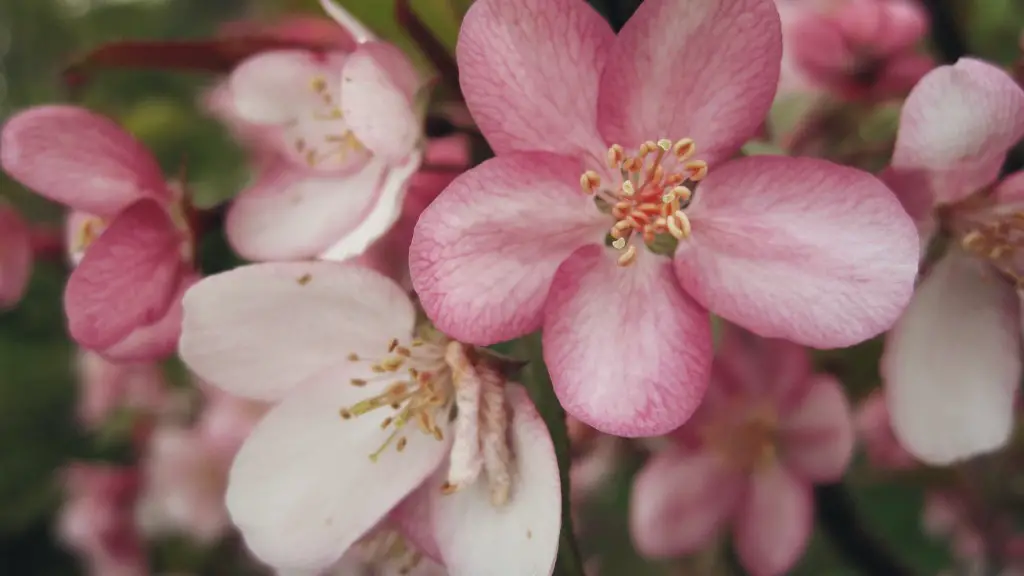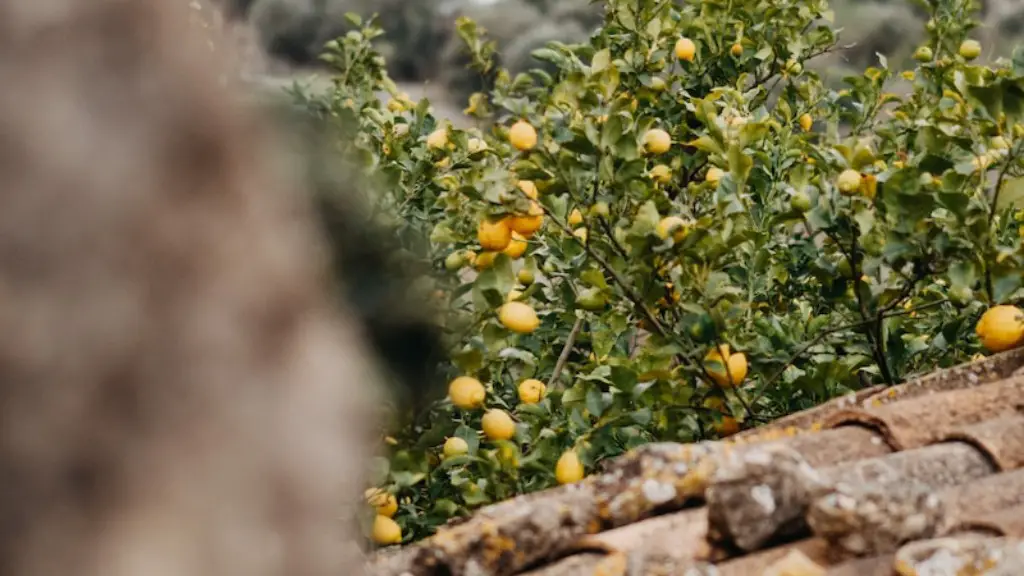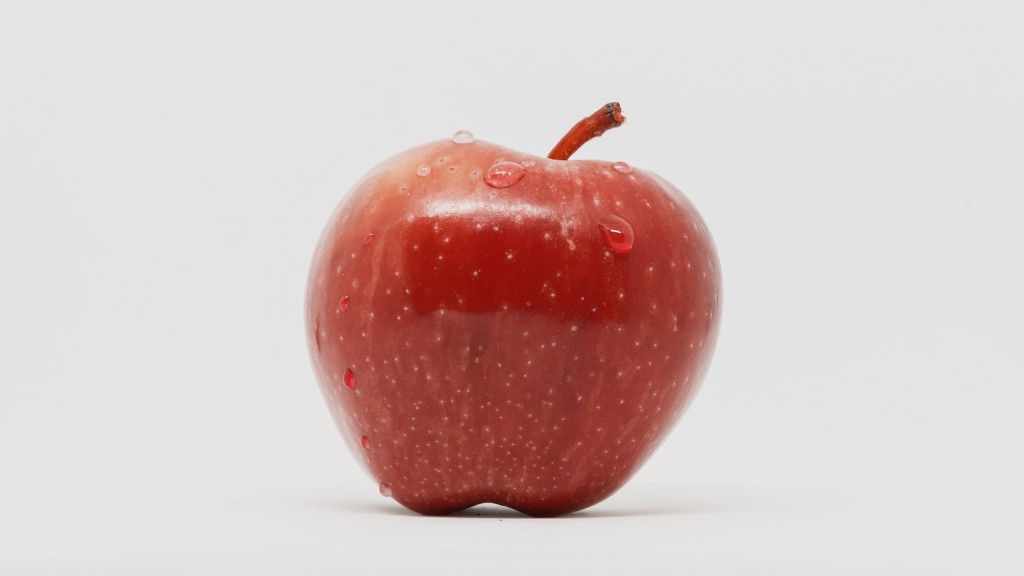Steps for Planting a Cherry Pit
Growing your own cherry tree at home can be a great way to enjoy the benefits of fresh cherries, while cultivating a connection to nature. Even though it can take a while before you start actually harvesting fruit, there are key steps you should take to ensure your cherry tree will blossom successfully from the start.
The process of growing a cherry tree from a pit is fairly straightforward: begin by getting a fresh cherry and then remove its pit in a process called “stratification”. The seed should then be kept moist throughout the cold stratification process, and it is important to note that cherry pits require an adequate amount of chilled time in order to sprout.
During this process, you can pre-soak the seeds in water or you can use a soil medium which has been specifically designed to improve stratification success. Once the pit has fully sprouted, you can then begin to transfer the cherry tree to an outdoor setting or an indoor container. Planting the seed in a plastic or ceramic pot makes it easier to keep your tree healthy, and it also allows you to monitor its growth and prevent damage from insects and other items. To ensure your tree will remain safe and healthy, fertilize it on a regular basis and keep it in an area where it will receive plenty of sunlight.
Given that a cherry tree can take several years to reach maturity and produce fruit, gardeners should be patient throughout the overall process. It is important to note that certain varieties of cherries, such as sour cherries, require a longer germination period than sweet cherries. In addition, the climate and soil of the location can also have an effect on the germination time of a cherry pit.
Fertilizing and Watering
For those gardening in colder climates, it is important to ensure that the tree receives enough water, especially during summer months. When watering, soaking the soil is the best way to ensure the roots are taking up all the water necessary. A natural fertilizer such as compost can be used to fertilize the tree and support its healthy development.
Seasonal pruning is also recommended, especially if the tree develops multiple branches. If a tree has only been allowed to grow vigoursly in one direction or has made a large detour from the vertical axis, this can create difficulties during harvesting. Pruning cherry trees is not a complex process, and it should involve removing any dead or diseased wood and removing shoots that are growing too close to one another.
It is important to note that there are several pests that can attack cherry trees, such as aphids, the Japanese beetle, and the Oriental fruit moth, which can cause major damage if left untreated. To prevent infestations, you can use methods such as removing and burning affected limbs and spraying the tree with eco-friendly insecticides.
Selecting and Protecting Your Cherry Tree
When it comes to selecting cherry trees for your garden, you should aim for varieties that are well adapted to the environment, climate and soil of your region. Sour cherry varieties, for example, have shorter fruiting seasons and conditions for their full development. Sweet cherry varieties, on the other hand, require a longer growing season and do not thrive in heavily shaded areas. Native cultivars can also offer the best results when planted in the garden, and these types of trees often require fewer interventions to thrive.
Once you have successfully implemented the necessary steps in growing your cherry tree, it is important to protect it against extreme temperatures and excessive rain. Cold and wet winters can weaken the tree and potentially cause it to die if not properly protected. If possible, you can use a thick layer of mulch around the tree and even wrap it in plastic during cold weather.
It is also important to remember that cherry trees need ample amounts of sunlight, and it is critical that they receive at least eight hours of direct sunlight per day if you wish to produce the best fruit possible. As the tree matures, you can also prune it to allow sufficient amounts of sun and air to flow through its branches.
Harvesting Your Cherries
Once your cherry tree has completed the necessary growing period and blossomed, you will be ready to start harvesting your fruit. Depending on the variety, the cherry picking season can last from May to late June, with sour cherries blooming one to two weeks earlier than sweet cherries.
When harvesting, you should pick only ripe cherries which have a red exterior and a slight amount of green. Unripe cherries often taste bitter, and they should be left if you are looking to enjoy a sweet snack. As well as taking caution when picking, you can also pick cherries with stem attached as this will help preserve them for longer.
Once the cherries are picked, they should be stored in a cool, dry place away from direct sunlight. If you wish to keep them for a while longer, they can also be frozen in typical plastic bags which should help preserve their flavour and texture.
Diseases and Pests
Diseases and insect infestations can also have a major impact on the productivity and overall health of your cherry tree. These types of issues can be difficult to spot and diagnose, and as such you should also take steps to monitor your tree closely for signs of distress.
Various fungal diseases can afflict your cherry tree and white mold, powdery mildew and bacterial canker are some of the most common examples. Fungicides, compost teas and vinegar are some of the most effective treatments for these types of diseases, and it is important to note that they should be used in the early stages of a disease in order to prevent it from spreading.
Moths, aphids, leaf-rollers and whiteflies are also some of the most common pests which can damage cherry trees. Removal of affected limbs and spraying with eco-friendly pest control methods are two of the best interventions when it comes to controlling these types of insects, and a mixture of water and dish soap is an effective and affordable treatment.
Although these pests can cause harm to growing cherry trees, they can also be beneficial if they are left in moderation. Various types of bees, for example, are necessary for cherry trees to pollinate and produce fruit, and as such growers should seek only to control, not completely eradicate, any infestations.
Cultivating and Eating Cherries
Cultivating a cherry tree at home can provide not only the satisfaction of producing the fruit of your labor, but it can also result in a delicious and healthy snack. Cherries are packed full of vitamins and minerals, and their antioxidant properties can help reduce inflammation and protect against diseases.
Though many choose to eat cherries fresh off the tree, they can also be used to make jams, pies and chutneys. In these cases, a sweeter variety of cherry is usually advised as this will better complement these types of ingredients. Once prepared, these foods can last for months and are a great way to store and enjoy the cherries for a longer period of time.
Though cherry trees have been grown for centuries, the same core steps discussed in this article can be used to successfully grow a fruitful tree in your garden. All that is needed is patience, proper timing and the knowledge of how to properly tend and protect your tree. Try these methods to ensure that your tree is producing delicious cherries for you and the entire family to relish in!
Identifying Varieties
Due to the many varieties of cherries, it can be difficult to identify the type of tree and fruit you are growing. As such, it is important to observe the leaves, flowers and overall growth pattern of your cherry tree and compare to pictures available online or in gardening books. In some cases, you may also be able to look up the variety name and origin of the cherry stone from which the tree was grown, and use this information to accurately identify the type.
The type of cherry tree you are growing will have an effect on the number and size of the fruit and will also impact the length of the growing period. Sweet cherries, for example, take from 6 to 9 months from flowering to ripening, while sour cherries typically need around 5 months.
For those cultivating a cherry tree for the first time, it is important to research the variety of the tree and its associated characteristics, as this knowledge can be essential when it comes to harvesting and other gardening processes.
Storing Cherries
The longevity of cherries can be greatly improved by storing them correctly, and the lifespan can be extended to a few months if done properly. Fresh cherries can be stored in the fridge or in a cool area of the house, but they should always be left in their husks and placed in a sealed container. For those looking to store cherries for longer, it is recommended to freeze them in its skin.
Though cherries can last for a few months when stored in its husk, it is important to note that the shelf life of pitted cherries is much shorter. In these cases, the fruit can be stored in the freezer for up to a year if the stone has been removed and the cherries have been frozen.
Cherries can also be dried and stored for longer periods of time and this is often done in order to preserve the fruit for use throughout the year. To dry cherries, place them on a baking tray and slowly heat them in a preheated oven. Alternatively, they can also be dried by placing them in the sun, but this process can take several days and requires the fruit to be moved periodically.
Benefits of Growing Cherry Trees
Though the process of growing a cherry tree can take several years and requires a great deal of work and patience, it can result in a rewarding experience. Not only can you enjoy tasty, natural cherries but you can also take pride in your own connection to nature and nourishment. In addition to the personal satisfaction it can offer, cultivation of cherry trees can also be beneficial for the local environment by providing a source of food for the local fauna.
The various stages which go into growing a cherry tree, such as pre-soaking, planting and harvesting, can also be a great way to spend more time connecting with family and nature. By working together and seeing the process through, you can gain an understanding of the cycle of nature and strengthen family bonds over a shared passion.
Ultimately, growing a cherry tree is a long process, but it can offer endless opportunities for personal growth and connection to nature. Through the various steps towards harvesting, flourishing and feeding with the delicious fruit, you can become one with nature and lay the foundations of a long-lasting relationship.



